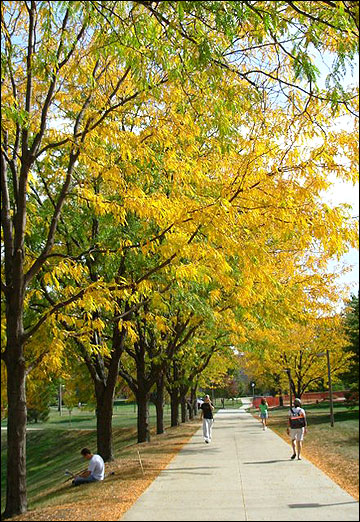Honey locust (Gleditsia triacanthos var. inermis)
Large trees

- Maximum height
80 feet - Relative growth rate
Excellent - Freedom from insect pests
Very poor - Freedom from disease problems
Good - Resistance to storm damage
Good - Will grow on poorly drained soil
Good - Will grow in hot, dry areas
Excellent - Easy to transplant
Good - Withstands city conditions
Good
Native honey locust trees are best known for their long, stiff, branched thorns that are a constant hazard. They also produce long, flat seed pods that may be a nuisance. The improved thornless, podless varieties of honey locust are the only ones that should be considered for planting. Many of these varieties are available. They make exceptional shade trees. The lacy foliage gives a loose, open shade that is ideal for shading patios and for growing plants. In the autumn the small leaflets filter into the grass as they fall and require little raking. Unfortunately, honey locust is subject to attacks by mimosa webworms, and unless the insect is controlled it may nearly defoliate the tree by midsummer some years.